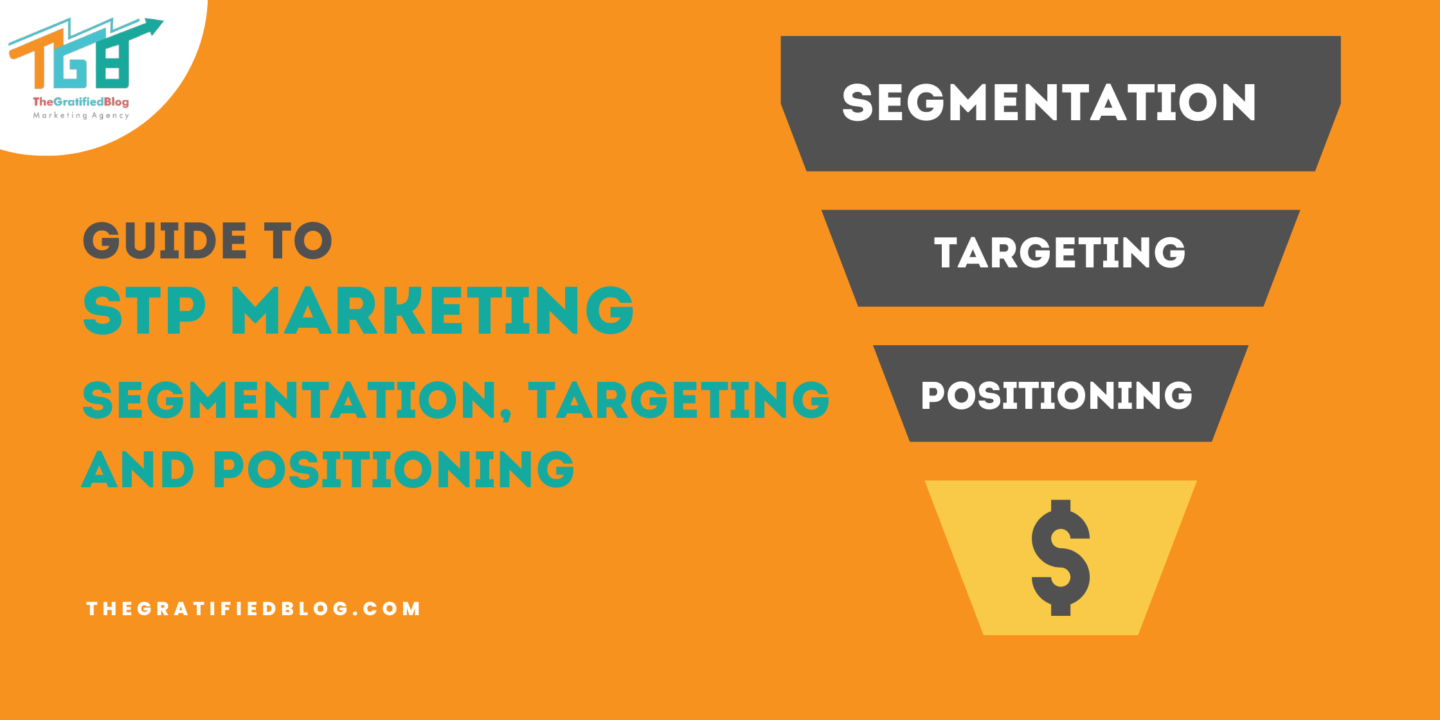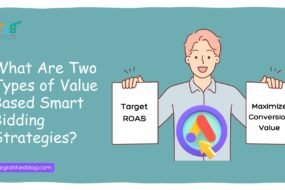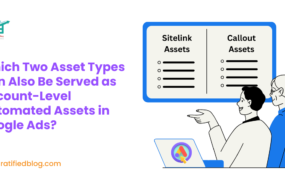
We have all heard the saying, “If you want to stand out in a crowded competitor marketplace, you must have a unique positioning.”
This statement is especially true in the world of marketing, where the competition is fierce. To stand out from the crowd of competitors, you must have a specifically tailored strategy for targeting and reaching your target market. This is where STP (Segmentation, Targeting, and Positioning) Marketing emerges.

This blog post will explore STP Marketing, the factors you must consider when segmenting, targeting, and positioning your products or services, how to create an effective STP Marketing strategy that always works, and some frequently asked questions (FAQs).
So, let’s begin.
What Is STP Marketing?
STP Marketing is a three-step process in which a company identifies the most desirable consumer segment, designs the right product or service, and positions it in the marketplace to maximize its reach. STP is an acronym for Segmentation, Targeting, and Positioning.
The STP Formula
The easiest way to remember the STP formula is to break it down into three simple steps: SEGMENTATION + TARGETING = POSITIONING.
How Does It Work?
Segmentation

It breaks down your target market into groups or segments based on common characteristics. This will help you understand the needs and behaviors of your customer segments and then create tailored marketing messages that speak to their needs.
Types of segmentation:
- Geographic segmentation: It involves dividing the market based on geographical factors such as location, regions, countries, or cities. This helps businesses cater to local preferences and adapt their marketing strategies accordingly.
- Demographic segmentation: It focuses on grouping people according to demographic characteristics like age, gender, occupation, income, education level, etc. This segmentation allows businesses to target specific demographics and customize their marketing messages to align with the needs and preferences of different groups.
- Behavioral segmentation analyzes customer behavior and interactions with products or services. It considers buying patterns, usage habits, loyalty, and engagement levels. By understanding these behaviors, businesses can personalize their marketing efforts and provide targeted offers or recommendations.
- Psychographic segmentation: It delves into customers’ lifestyles, values, attitudes, interests, opinions, and beliefs. This segmentation goes beyond demographic factors and provides deeper insights into consumer motivations and preferences. It helps businesses understand the psychological aspects that drive consumer behavior, allowing for more precise targeting and messaging.
Targeting

Once you have identified your segment, you must decide which segment is worth targeting. As such, you need to consider factors like
- Size: When deciding on an audience segment, it is essential to ensure that the group has enough potential customers to be worthy of marketing. If you target too small a subset, your investments in the campaign may not pay off with successful conversions. Therefore, consider the total number of people this market could benefit from and any smaller subsets before launching your efforts.
- Profitability: Since the ultimate aim of any marketing campaign is to make a profit, it is essential to consider if this segment could bring in enough revenue. Assessing the buying power and propensity of the customer is critical as this will directly affect your ROI from targeting them.
- Reachability: You must ensure that you can reach the target segment. This includes evaluating media channels and promotional strategies to guarantee that your message reaches the appropriate audience. Also, it is vital to consider the frequency and timing of your messages to reach the target segment.
Positioning

The final step is Positioning. Crafting a distinctive and memorable position for your product or service to thrive in the market would be best. Doing so will help you outshine the competition and simplify things so customers remember your brand.
A unique standing can give you an advantage and is critical when striving toward success. Therefore, create a unique message and an appealing brand identity to position your product or service in the market.
Now that you know the steps for STP, let’s discuss the strategy to create it.
How To Create An STP Marketing Strategy That Never Fails?
Define The Market
To begin, you must define the market in which your product or service will exist. You must understand the industry and its competitive landscape to better position yourself. Research customer demographics, needs, media channels available, and competition within that particular market segment.
To Identify the opportunities, you need to define three types of markets:
- Total Available Market (TAM)
This market comprises all potential customers of your product or service, offering the most excellent opportunity for revenue generation. It would be a remarkably lucrative endeavor for your brand if you could capture 100% of this extensive marketplace!
- Served Available Market (SAM):
This segment comprises all the customers you can target with your product or service. This segment should include a significant portion of the TAM and represent an attainable opportunity for your organization.
- Service Obtainable market (SOM)
This set of customers is ideal for your company’s product or service to reach out to and capture. By targeting this segment, you can be sure that your brand will benefit from a significant market share and profit potential.
Identifying your competitors is essential for developing a successful marketing tactic. Here are some key points to consider when assessing your competitors:
- Pricing Model: Analyze how your competitors price their products or services. Determine if they offer competitive pricing, discounts, or unique pricing strategies.
- Customer Loyalty Program: Assess if your competitors have loyalty programs or customer rewards programs in place. Understand the benefits they offer and how they incentivize customer loyalty.
- Advertising Campaigns: Study your competitors’ online and offline advertising efforts. Look at the channels they use, the messaging, and the overall effectiveness of their campaigns.
- Product or Service Differentiation: Identify the unique selling points of your competitors’ offerings. Understand what sets them apart and how they position themselves in the market.
- Strengths and Weaknesses: Evaluate your competitors’ strengths and weaknesses. Identify areas where they excel and where they fall short. This will assist you in pinpointing opportunities to distinguish your brand and outperform them.
Create And Identify The Valuable Segment
Once you have segmented your target market and identified your competitors, the next step is to create and identify the most valuable segment. This involves assessing the potential value of each segment based on factors such as buying power and customers’ propensity within each segment.
Determining the most valuable segment is important as it directly influences your return on investment (ROI) from targeting them. By evaluating the purchasing power and likelihood of customers engaging with your product or service, you can prioritize your marketing efforts on the segment with the most tremendous potential for generating revenue and maximizing impact.
This assessment allows you to focus your resources and tailor your marketing strategies specifically to the needs and preferences of the most valuable segment, increasing the chances of success and optimizing your ROI.
Create Your Positioning
The next step is to create a compelling brand position, which helps you to stand out from the competition and is critical for success in the market. You must ensure that your message is memorable and distinct from your competitors.
To do this, you need to clearly state what makes your product or service unique and the benefits that come with it. Here are specific positioning strategies:
- consumer-based positioning,
- price-based positioning,
- product-based positioning,
- Promotion-based positioning, etc.
Evaluate Your Marketing Mix
This final step could be a lifeline if you need help to make your strategy work. Evaluating the marketing mix is essential, as it will give you an insight into how well your campaigns perform. This mix comprises four parts – Product, Place, Price, and Promotion.
- Product: This element focuses on the features, benefits, and value of your offering. Evaluate how well your product meets customer needs and how it differentiates from competitors.
- Place refers to the distribution channels to reach customers and deliver products or services. Assess the effectiveness of your distribution strategy, including physical stores, online platforms (Social media, google ads, etc), and mobile channels.
- Price: Price is the monetary value customers pay for your product. Evaluate your pricing strategy regarding competitiveness, profitability, and customer-perceived value.
- Promotion: Promotion involves communicating the value of your product or service to customers. Assess the effectiveness of your promotional efforts, including advertising, public relations, sales promotions, and digital marketing.
Once you have evaluated this mix, tweak it to improve results and reach more customers.
Challenges In STP Marketing
- Data Privacy and Ethics: Gathering and utilizing customer data for segmentation and targeting raises concerns about data privacy and ethical use of information. Achieving an equilibrium between personalization and respecting customer privacy is essential.
- Increased Competition: As markets become saturated, businesses face heightened competition, making identifying and capturing unique market segments challenging. Staying ahead requires innovative strategies and constant adaptation.
- Rapidly Changing Consumer Behavior: Consumer preferences and behaviors evolve quickly, necessitating regular updates to segmentation and targeting strategies to remain relevant to the target audience.
Future Trends In STP Marketing
- Artificial Intelligence and Automation: AI and automation will revolutionize STP Marketing, enabling more accurate customer segmentation, real-time targeting, and personalized communication at scale.
- Hyper-Personalization: Advancements in data analytics will lead to hyper-personalized marketing, where messages are tailored to individual preferences, resulting in increased engagement and customer loyalty.
- Omni-Channel Integration: Future STP Marketing will seamlessly integrate across various online and offline channels, ensuring a consistent customer experience and maximizing the reach of targeted campaigns.
- Sustainability and Social Responsibility: Customers increasingly favor brands committed to sustainability and social responsibility. STP Marketing will incorporate these values to resonate with socially conscious consumers.
FAQs On STP Marketing
Q1: How does STP Marketing differ from traditional marketing approaches?
A1: STP Marketing differs from traditional marketing approaches by focusing on segmentation, targeting, and positioning. It emphasizes understanding customer needs and behaviors to deliver tailored marketing messages, resulting in more effective and efficient marketing campaigns.
Q2: Can STP Marketing be applied to both B2B and B2C businesses?
A2: STP Marketing can be applied to B2B and B2C businesses. The process of segmentation, targeting, and positioning is valuable in understanding customer needs and crafting effective marketing strategies in various industries and markets.
Q3: Is it necessary to revisit and update the segmentation in STP Marketing?
A3: It is essential to revisit and update the segmentation in STP Marketing. Customer behaviors and preferences change over time, and markets evolve. Regularly updating segmentation ensures businesses stay aligned with their target audience and remain competitive.
Final Thoughts:
It is now clear why STP marketing is so popular. It is the key to generating maximum sales and ROI. Moreover, it can be utilized to formulate impactful strategies that enable companies to differentiate themselves from their competition and tap into potential customer segments.
Still, if you have any questions, please ask them in the comment section. We will be happy to answer you.
Thanks for reading 🙂








No Comments